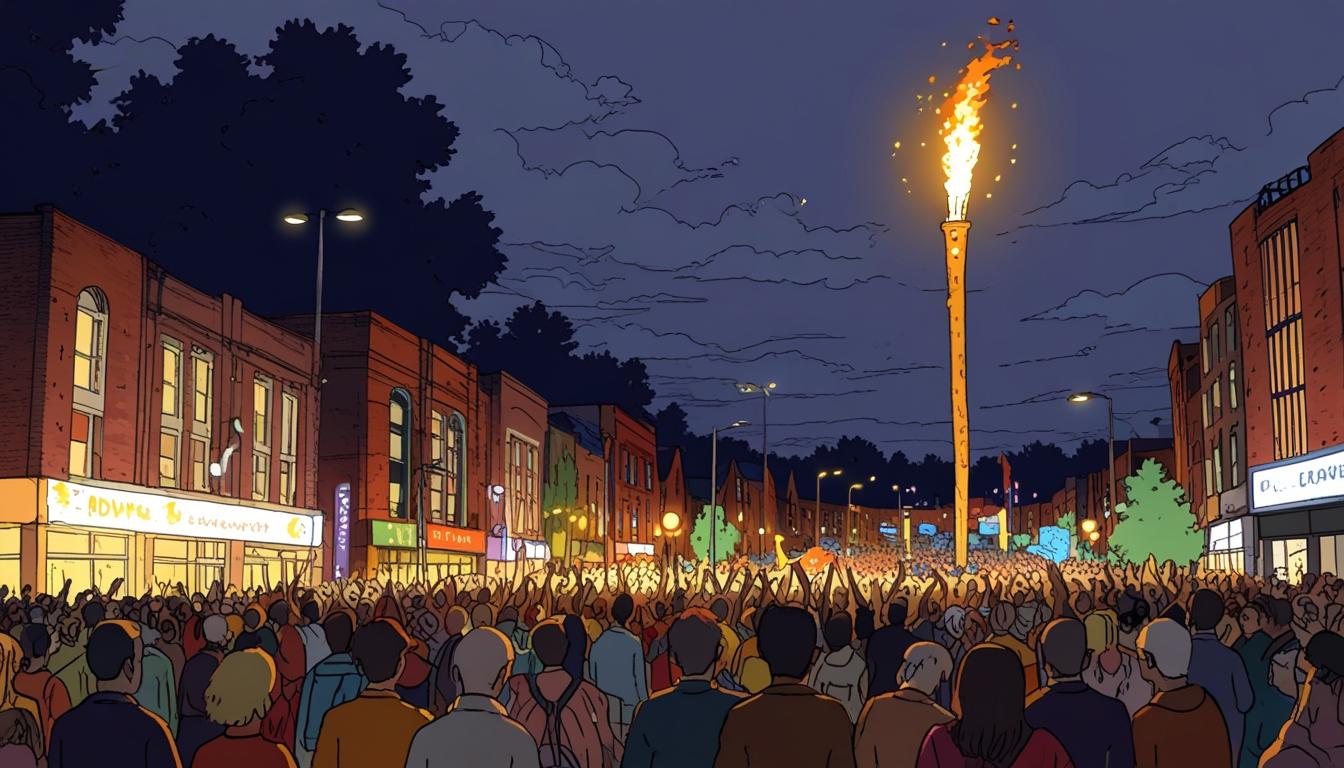In March 1993, a notable community event marked the imminent demolition of Hulme Crescents, one of Europe’s most infamous housing estates, located in Hulme, Manchester. Built in 1971 as a modern alternative for those displaced by slum clearances in the 1960s, the Crescents consisted of large, U-shaped concrete blocks designed to accommodate over 13,000 residents. Each block was named after a renowned Georgian architect—Robert Adam, Charles Barry, William Kent, and John Nash. However, by the late 1980s, those ambitious designs had devolved into neglected structures plagued by crime and neglect, with the authorities eventually conceding defeat as the buildings became infested with cockroaches and occupied by squatters.
Amidst the £37 million revitalisation funding received from the Government in 1991, which targeted various declining parts of Manchester including the Crescents, a momentous community celebration was organised shortly before the demolition commenced. This event was orchestrated by the local community arts group, Dogs of Heaven, and was intended as a symbol of transformation for the area. According to community spokesman Peter Marcus, "The demolition will mark the momentous changes taking place in Hulme." He emphasised that the downfall of the Crescents would signify positive developments for the future.
The highlight of the celebration attracted over 5,000 attendees, featuring an engaging mix of theatre, dance, music, and a vibrant fireworks display. Anne Worthington from Dogs of Heaven remarked, "People will be taken on a journey from the old Hulme to the new." The event, fittingly named "Safe as Houses," portrayed the end of the Crescents through various artistic expressions, including dramatic performances where characters dressed as bats, cockroaches, and overflowing bins paraded below a grand "Olympic torch" that illuminated the night sky with a stream of fire.
The farewell spectacle left a significant mark, being featured in a review published by the Manchester Metro News, which praised it as "a magnificent sound and light show" and referred to it as an “explosive farewell” to the notorious estate. The review captured the day’s highlights, notably the destruction of four cars that were pushed off the six-storey structure of William Kent Crescent as part of the performance.
Just days following the event, the atmosphere shifted as the community gathered once more to witness the physical demolition of the structures that had been a source of substantial social issues. A demolition ball, weighing two tons, struck the side of Robert Adam Crescent, marking the definitive end of an era for one of the most talked-about housing estates in Europe.
Source: Noah Wire Services
